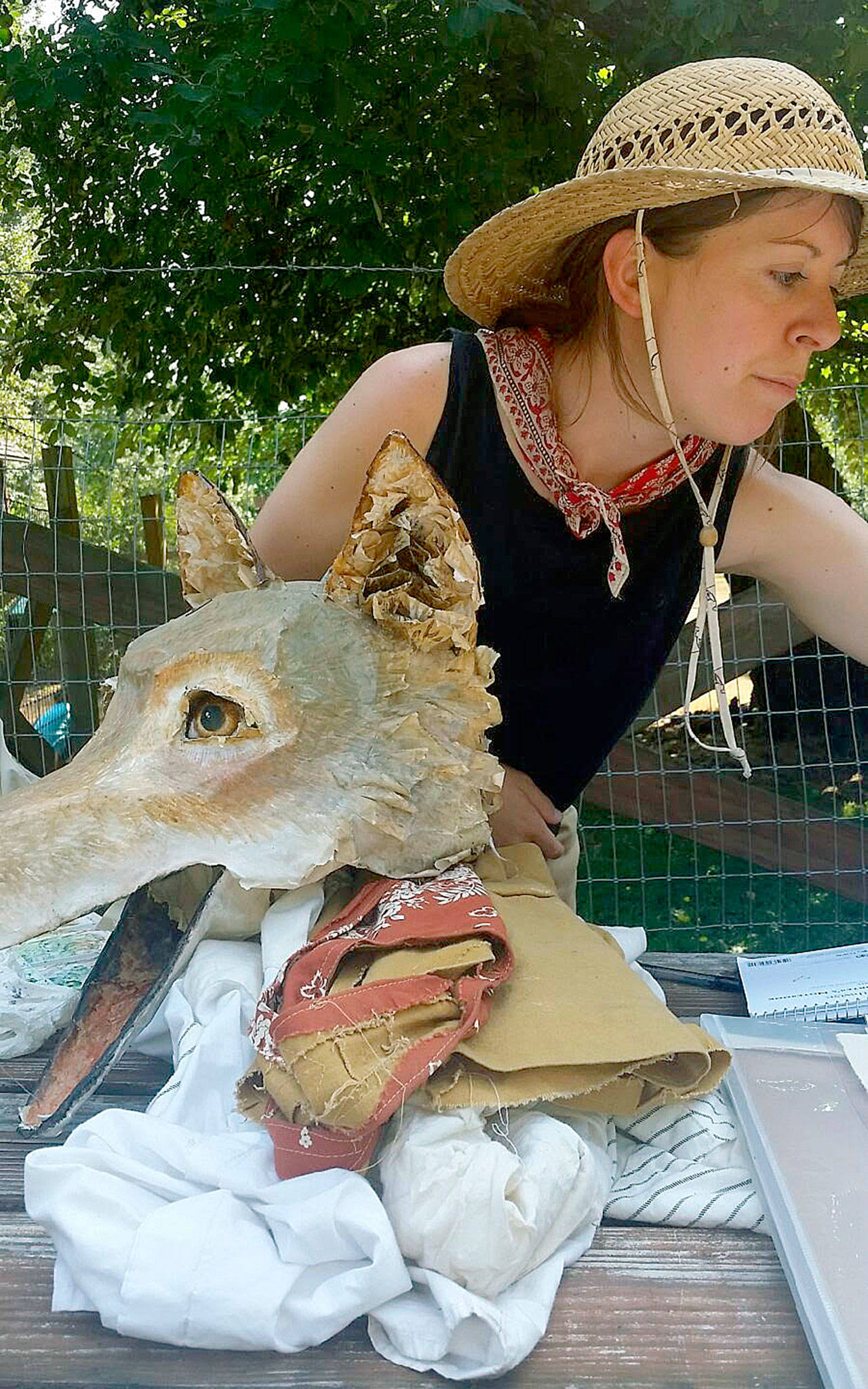To keep the sharpest fangs of the late July afternoon’s heat at a bearable distance, Michelle Lassaline settled self and easel, pencils, palette and paper in the pleasant shade of an old apple tree, pulled on her straw hat and got busy.
If not for the heat last Sunday, Lassaline would have been working in that curious, handmade coyote mask at her left elbow when she turned her attention to Torie, a 4-year-old girl in front of her with a request.
“I asked her, ‘If you could be an animal, what animal would you like to be?’ And Torie wanted to be an otter, so I made a little watercolor drawing of an otter, and it says ‘Torie the Otter’ underneath.”
Torie had plans for the work.
“I’m going to put it on something,” she declared.
“I find it attracts kids, but adults also enjoy it, so it’s for everyone,” Lassaline said of her artwork by request.
Thus, Lassaline at work in the closing hours of the first season of Mary Olson Farm’s Artist in Residence program, a partnership between the City of Auburn and the White River Valley Museum. In the Carson City, Nevada native and present Seattle resident, the partnership found what it had been looking for – an artist keen to draw inspiration from the beauty and history of the 67-acre site.
Expected from Lassaline: a minimum of 10 hours per week times eight weeks, creating work on-site at the farm studio space; two “open-studio” weekend afternoons for the public; one free, artist-led workshop demonstrating techniques or inspiration to the public; participation in a final artist talk-presentation, reception and exhibition; and the donation to the City of one piece of artwork created during the residency.
The opportunity provided the lucky artist with an ideal setting in which to pursue her work and to draw inspiration from the farm’s beautiful setting.
Any individual artist or artist team in the Pacific Northwest working in two and three-dimensional formats is encouraged to apply, including but not limited to, drawing, painting, photography, textiles, sculpture, installation, woodworking and printmaking.
The residency, which lasts about two months in June and July, provides a $3,500 stipend, accommodations not provided.
Lassaline provided her own art supplies and transportation to and from the farm. Lassaline spent June and July using the historic barn and farm as a studio and a source of inspiration for new work, centering her attention on her two favorite subjects – animals and nature.
“It’s definitely good. I’ve spent a lot of time getting to know the donkeys and the cow, watching their coats change with the season from dark and fuzzy to smooth, light coats. I’ve gotten to know the three barn cats – Scarlet looks at me now, Can-Can and Squint are the little grey ones, and I’ve been able to pet them twice,” Lassaline said.
Turns out, artistry runs in her family.
“My grandfather was an artist and my uncle and cousin are all landscape watercolor painters, and I was just around it a lot, so it kind of seemed like an option. And because I loved it and could see it happening, it didn’t seem like too much of a stretch. People say, ‘starving artist,’ but I just say, ‘I’m a working artist.’ It’s a lot of practice and encouragement, and I was very encouraged,” Lassaline said.
Lassaline performs in the paper-maché masks she makes. To date, she has made 11 of them.
“I’m showing a video piece right now at 4Culture in Seattle on their storefront media screens, and that’s a short film about the pelican mask character, which is just like the coyote, and the pelican travels through the watershed system here, from the lakes to the streams to the Sound to the ocean,” Lassaline said.
“I feel that that form could only be performed in the mask, and that led me to doing performance art pieces, mostly drawing while wearing the masks, but sometimes if I couldn’t be present in the mask, I started making video and film,” Lassaline said.
Here perhaps is her favorite moment at the farm.
“I have drawings and paintings set up in the barn for the people who come on the weekends, and the caretaker was standing by the animal sheds when a young girl ran up to the cow saying, ‘Oh, hello, Libby.’ So the caretaker said, ‘You must have been here before – how did you know the cow’s name?’ She said, ‘Oh, I read it on the drawing inside the barn.’ Seems the art has been a good entry point for people.”


